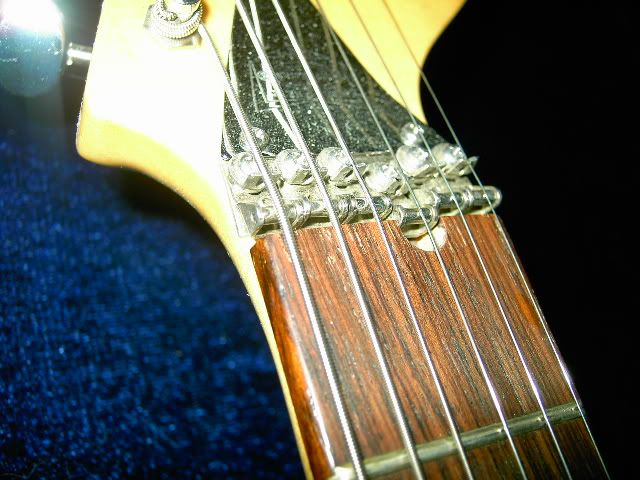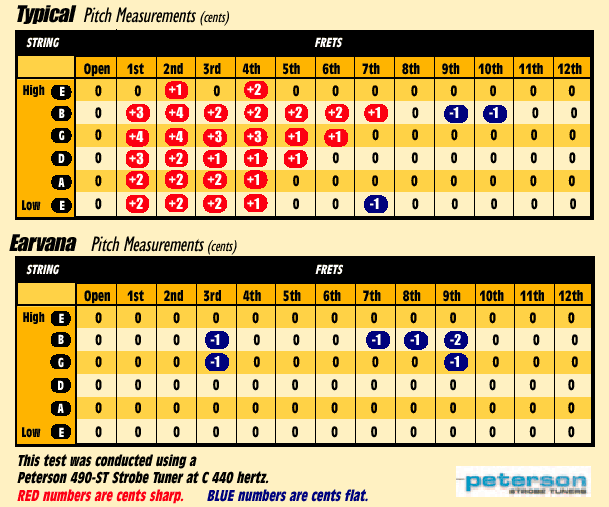Hi, I'll chime in here because I find the idea of compensated nuts very interesting. It seems like a logical improvement and I'm thinking of fitting them to mine.
Earvana also make a compensated nut, and it is a lot cheaper.
The BF system moves the strings forward uniformly, then uses different than usual compensation at the bridge and (so I believe) a specific intonation/tuning process. They use bone nuts.
The Earvana system has been around longer and was actually patented first by Ernie Ball, although used for much longer by luthiers. It compensates each string differently at the nut, which is logical. Tuning and intonation are done the same as normal. Again, improvement can be made by compensating at the bridge also. Easy with an electric, but for an acoustic you'd want to install a compensated saddle for best results.
A disadvantage is that their nuts are high density polymer. Allegedly better than bone, but I doubt it somehow.
There is a guy in UK who hand makes compensated shelf nuts from bone, using the same system as Earvana and Ernie Ball.
http://cgi.ebay.com/Solid-BONE-COMPENSA ... 1201wt_905
He also makes compensated saddles from bone, ebony etc. for acoustics.
I suspect that Buzz Feiten went with their design to avoid a patent dispute with Ernie Ball, but have still come up with a decent system, even if a little more complicated. To my way of thinking, the Earvana/Ernie Ball system is a more elegant, simple solution to the problem. Ernie Ball recently sued Earvana for patent infringement and won. Earvana is still in business, but now pays a fee to Ernie Ball.
My recommendation would be to go for the Earvana/EB system, just because technically it makes more sense and should, in theory, work better.
Opinions may vary, but that's my two cents worth!
Would be very interested in the results you get from either system.


